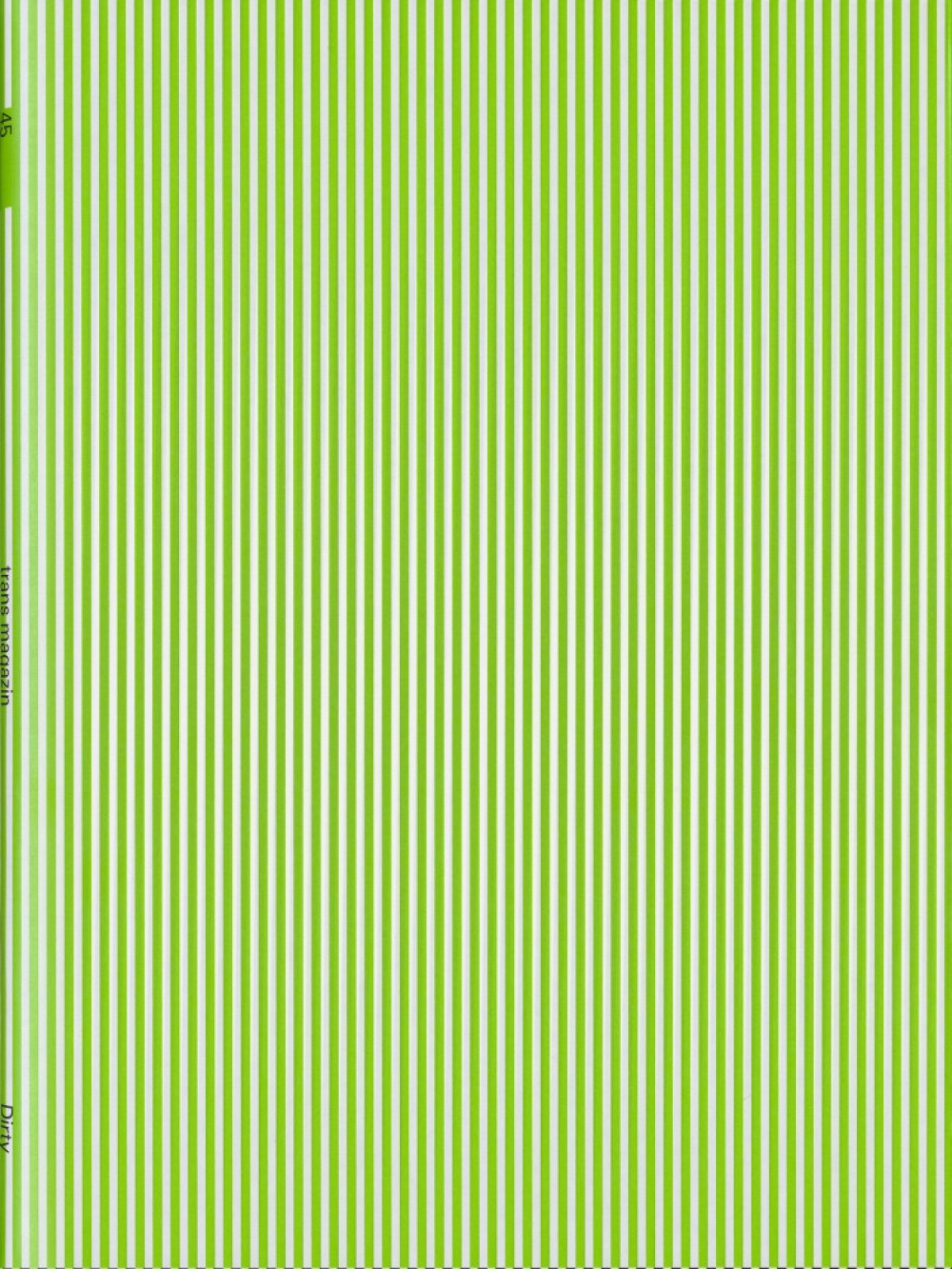There has been an incredibly prolific reaction to the topic of this issue – Dirty. Not too surprising, though, considering how embedded the topic of dirt or its rejection is in our architectural bubble. Cleanliness is an obsession, dirt is a fascination; a revolutionary revelation that you experience when you introduce something unclean into your design.
Much has been theorised on dirt. Some well-travelled quotes that we have come across again and again mixed up with a fair amount of truisms – from the start, this issue has been in danger of repeating them. As is this editorial.
What we try to investigate, instead, is the bare reaction one gets when confronted with something dirty, this body-shivering aversion. Something that might happen if a giant picture of a cockroach was printed on the following page. Or worse still, if a living one was crawling out of trans 45. Disgust is a compass that helps us navigate the world, discriminating what could intoxicate us, what represents a supposed danger to our integrity as a body, or as a society. It is embedded in our personal and cultural system of discernment, and it goes further than a protective mechanism.
This disgust is the protection of one’s boundaries; it is a rejection fundamental in the construction of the self. This is why the immediate reaction that disgust unleashes is so powerful. You take a sip of milk, it is rotten, a taste you cannot describe because you never experienced it for long enough, you immediately spit it out, you wash your mouth as rapidly as possible, several times, to wipe out the feeling of sickness from your throat and mind. Beyond our material world, the pattern repeats itself. Creating antagonisms is inherent to any process of identity-building. I do not exactly know what I am, but I can define myself by separating from what I am not. However, as we finally and rightly began to deconstruct dichotomies, borders began to blur. With today’s disappearance of an obvious «other» to reject, a self-examination began. What an odd feeling! This body-shivering rejection of the dirty now turns towards ourselves. Our irreversibly commodified bodies became the source of our own disgust, our corrupted minds the source of our anxieties. As architects-to-be, our sharpened awareness led us to discover the inherent dirtiness in our practice. We disowned our masters, we disavowed our teachers, we distanced ourselves from our rites. The student of architecture, becoming too aware of all the dirt their profession produces, establishes a sanitary barrier, refusing to get their hands dirty.
The same urge that pushed us to instigate change, undermined its means of action. This is, on the face of it, the ambiguity we tried to grasp here. It would be almost trivial to say that sometimes we feel that our disgust compass is a bit off. In an incredibly sensible effort to show curiosity towards what one repudiates, the contributors of this issue opened great nuances in our understanding of dirtiness and, we hope, yours as well.
Contributors
Elias Aebi, Lewis Beauchamp, Lucia Bernini, Lily Blanchard, Dasha Byrne, Nico Canal, Loïc Cao, Lulu Crouzet, Paola De Martin, Christina Fäh, Hélène Frichot, Damla Göre, Steffen Hägele, Philipp Heckhausen, Robin V Hueppe, Adam Jasper, Rabea Kalbermatten, Blanka Major, Lara Makhoul, Danny Sahan, Sina Schaper, Thomas Sommerauer, Jakob Walter, Ella Willemse, Lene Zech
Editors
Caspar Bultmann, Lida Freudenreich, Maud Haas, Simon Nougué
Table of content
"Ne manque que les champignons et les bolets!"
Islands of milk
Eat some dirt, it's healthy
Don't buy this shit
Recent excavations
For dirt is to leave a mark
Cleaning protests
Hills and rocks
Filthy archives
Grenzsanität Brig : on the complicity of architecture in the Swiss border regime
Hold me twice
Somebody else's mess
Bliss after disgust
A conversation with Hélène Frichot
Algospeak
Reinigung ohne Putzfrauen
Dirty business
Fug
TOITOI has the right to Camus
Lenzburg et al. : oder: Die Europäische (Ersatzneubau-)Stadt als 21st-Century-Capriccio
The clouds are grey
Bloss in Dissonanz : Palais Ideal - Elemér Zalotay
